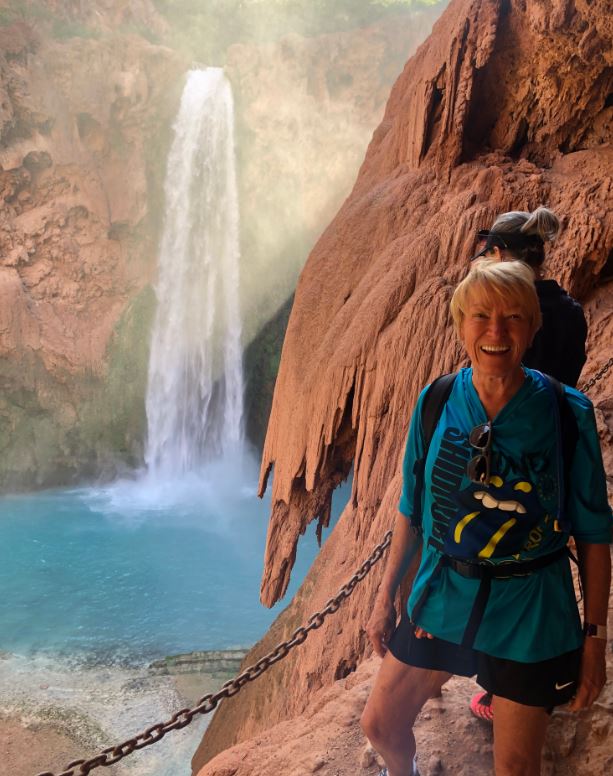Scottsdale resident Carol W. was a gymnast in high school and college and has been physically active throughout her life. In recent years, she was a large event producer who often walked 20,000 steps a day, in heels, at major hotels and convention centers.
But the years took their toll on her lower back and left leg.
“I can remember shows I was at where the pain in my back and sciatic (leg) pain was so severe I would have to lay on the floor of our conference office,” Carol recalls.
Journey to find a solution

Carol tried various non-surgical pain-management options — physical therapy, chiropractic care and three epidurals. “The pain was constant for a couple of years,” she explains. “It was non-stop and nothing ever worked. I saw multiple doctors and tried really hard to do all the stretching and the PT, and on and on, and absolutely nothing made a difference.”
Eventually, Carol was referred to Luis M. Tumialán, MD, a spinal neurosurgeon and independent member of the HonorHealth Medical Staff, who has performed more than 1,200 decompressions and 800 fusions. He found that Carol had grade 1 L4-L5 spondylolisthesis with spinal stenosis, medical conditions involving spinal vertebrae slipping out of place and narrowing of the spinal canal space.
It was recommended that, given her symptoms, she participate in the Lahey Clinic SLIP II Registry, a clinical study under the Neuroscience division of the HonorHealth Research Institute that would track her improvement over several years from her pre-operative baseline status to post-operative follow-up visits.
“I was impressed (with Dr. Tumialán), and it was an easy decision for me to make to follow his recommendations and have the spinal fusion and spinal facetectomy,” said Carol, who in January 2022 underwent a minimally invasive transforaminal lumbar interbody fusion (TLIF) procedure. “Aside from my recovery from surgery, I’ve never had another moment of pain.”
Reclaiming her active lifestyle
After three months, Carol was showing signs of significant improvement, and Dr. Tumialán cleared her for general physical activity. After six months, he cleared her for all activities, including tennis.
“I was back playing tennis again, and I was walking and hiking,” says Carol, who still plays tennis once a week.
After hiking and working out on treadmills during summer, in October 2023 she hiked down the difficult 10-mile Havasupai Trail inside the Grand Canyon to some of the world’s most gorgeous waterfalls. Her one concession: she let a mule carry her 30-pound backpack.
Carol traversed all five waterfalls — including one, the nearly 200-foot Mooney Falls, taller than Niagara Falls — climbing along through the chain ladders and tunnels. She estimates she hiked about 30 miles in all.
“I feel like I could do it all over again, if I wanted to,” shares Carol, now 72. “I’m pretty proud of this. It was a big accomplishment. I’m glad I did it, and I’m glad I’m done with it. It was a lot of work, but it was a great experience.”
She is now celebrating two years of being pain-free, with the only after effects of her surgery being two small incision scars at her waistline, one on each side of her spine.
For others experiencing back pain, Carol recommends they do their homework, exhaust all non-surgical remedies, and then be ready to follow a doctor’s recommendation for a surgical procedure, if needed.
“It’s nice to be reminded of how pain-free I am all the time,” she says.
Offering patients innovative treatment options
The HonorHealth Research Institute is at the front of today’s most important health questions. Established in 2005, the Institute has become a patient destination for treatments often available nowhere else.
Signs, symptoms and treatment options
Did you know back pain is one of the most common medical problems? It affects eight out of 10 people at some point during their lives. If you suffer from back pain, understand your treatment options.
An in-depth approach to spine care
When it comes to your spine, we understand how complex care can be. Check out important information about leading-edge spine care.